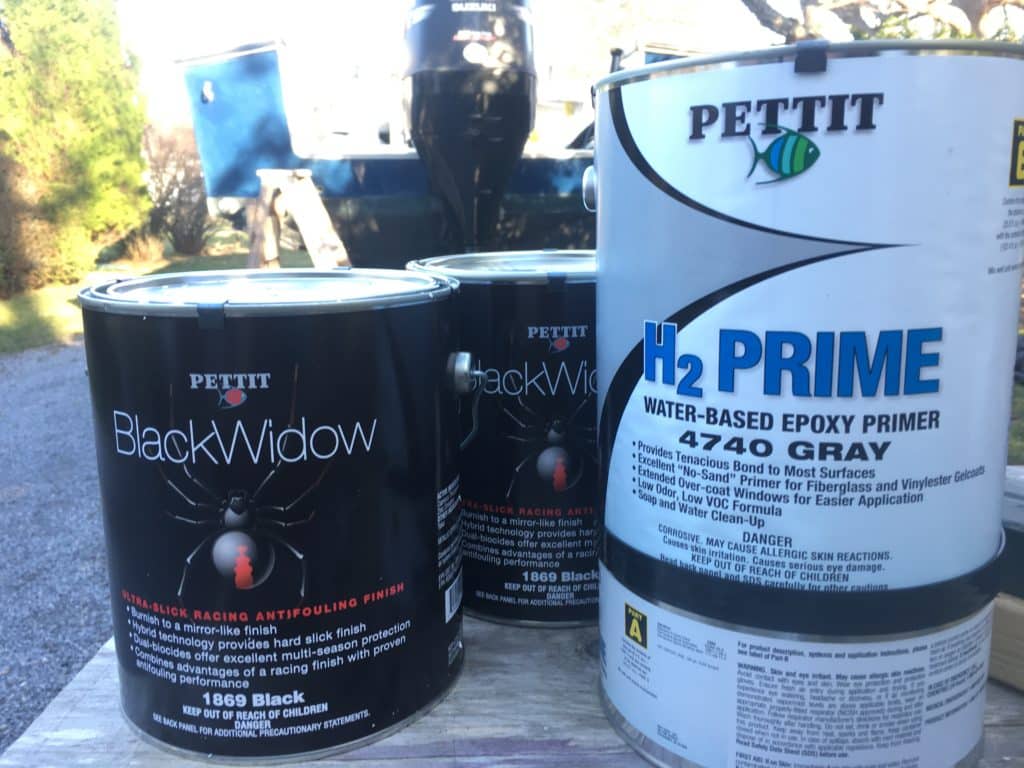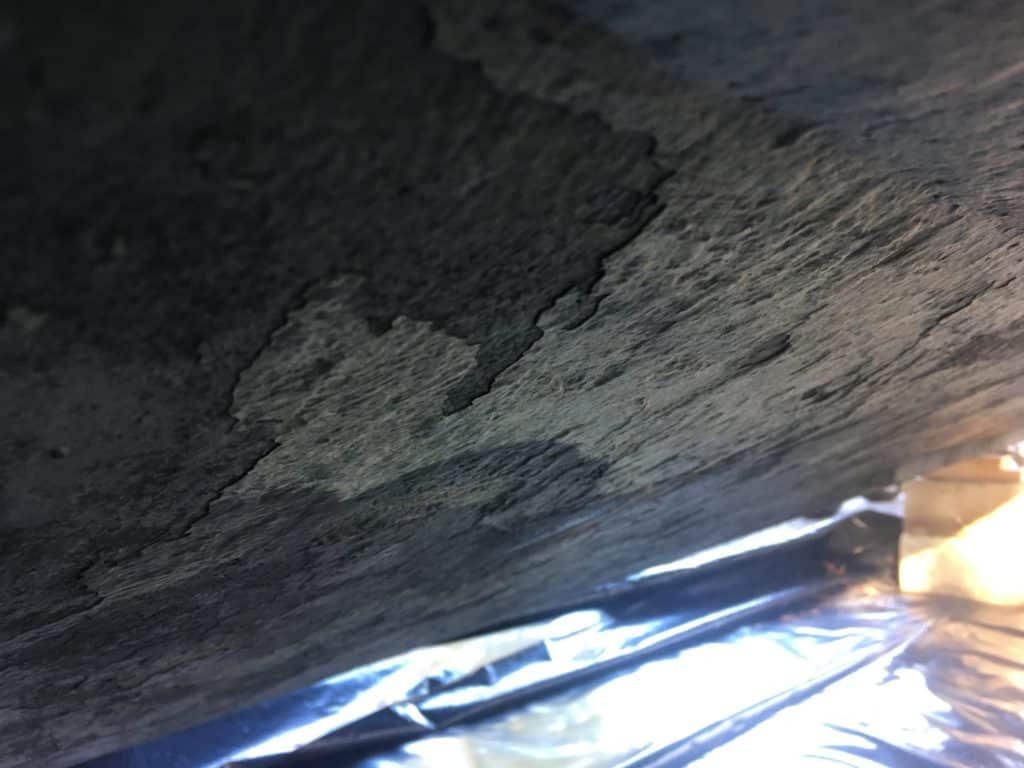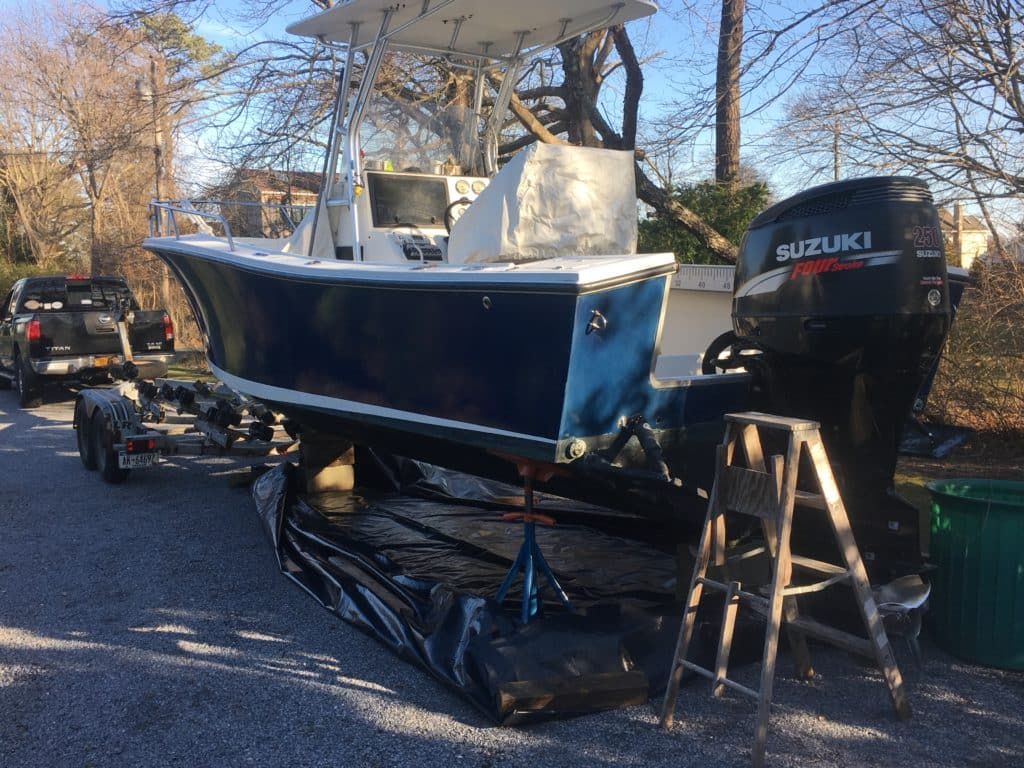Black Widow from Pettit is a new antifouling paint designed for high-performance racing craft like offshore powerboats or racing sailboats. It can be burnished–sanded and polished– to a mirror-shine that provides an outstandingly slick surface. It also contains a quartet of high-tech anti-fouling agents that are said to provide multiseason protection from growth.
Get All The Tech Specs On Pettit Black Widow

I had planned to refinish the bottom of my Regulator this year, stripping the 17 years of anti-fouling paint, priming the bottom and applying several fresh coats. As the pictures show, she needs it.
When I heard about Black Widow from our contacts at Pettit, I knew it was the one to use for this project. For one thing it was not only a brand new paint, but a whole new system that works in several different ways than other anti-fouling coatings on the market. Those reasons make testing and evaluating the application and performance of Pettit Black Widow for you, the Boating audience, a no brainer. Helping you choose the right boats, motors, marine accessories and maintenance items by presenting our experience of actual use and testing is how we roll.

Old Bottom Paint Buildup
In this case, what you see of my boat’s bottom reflects seven years of applying ” hard” anti-fouling paints. I applied ablative paints, which wear away and do not build up, for the subsequent 10 years. But I can cut bait no longer. It’s time to get that bottom stripped, something I should have did when I made the switch from hard to ablative paints.
Having stripped several boat bottoms using both chemical means, and by sanding, in the past, I can state with certainty that it is one of the worst DIY tasks ever. Plus, we have covered those techniques in the past. To provide you with new information, and because we think this method makes the most sense, we will be detailing the process of having the boat’s bottom stripped down to the gel coat by use of soda blasting.
We’ll detail that process in another post, along with video, but the first step was to lay a sheet of 6 mil poly film ( available at hardware and garden stores) 10 feet longer than the boat and 20 feet wide down on the ground. Next we had to offload my boat from its trailer, onto blocks and poppets (“boat stands,” “paint stands”) onto the poly sheet. The poly will be connected to a,”skirt,” affixed around the boat’s waterline so that the entire stripping process occurs inside a tent of sorts. This was done at the advice of our blasting expert, Bill from All About Blasting Long Island, New York. While we could have simply offloaded the boat and Bill could have cut and re-taped the sheet of poly later, to fit around the blocks and poppets, our schedules didn’t mesh, so I opted to lay the sheet down, offload the boat and have all ready for the appointed day.
We’ll document the soda blasting process in detail, and provide you with tips from our expert in what to expect, and what questions to ask, of a blasting/stripping contractor. Of course, we’ll also show you the before and after results of the soda blasting.










